


Passages - 2011 Chengdu Biennale
[The Solutions: International Design Exhibition]
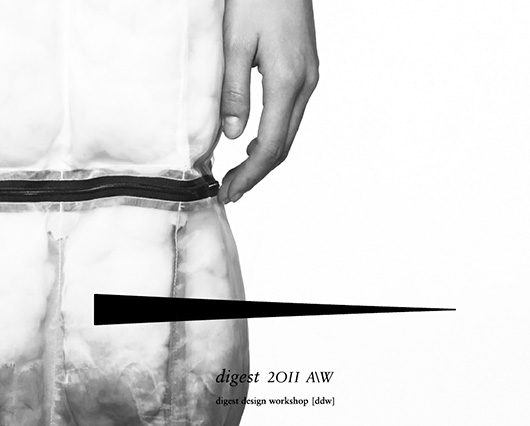
2011成都双年展国际设计展 [the Solutions 谋断有道] 参展作品
作品材料:棉花,涤纶,墨水
作品规格:2000mm*4000mm*2600mm (长宽高)
2011 Chengdu Biennale [The Solutions: International Design Exhibition]
Materials: cotton, polyester, ink
Dimensions: 2000mm*4000mm*2600mm (length*width*height)
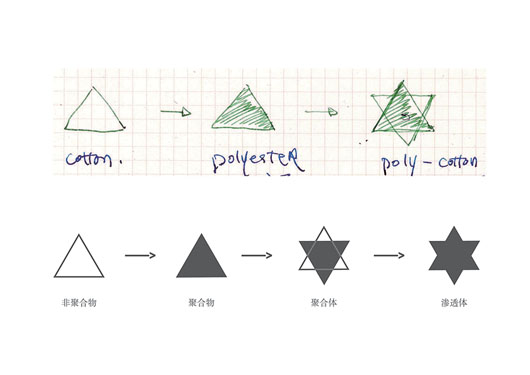
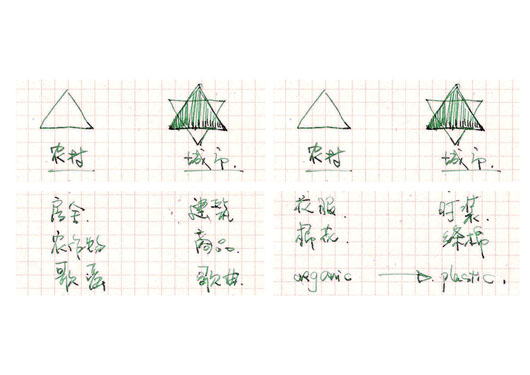
从城市和农村入手来探讨“谋断”是当下国内社会最需要的“方案”,最初被“the solutions”吸引到,也是因为这个原因。
China is yearning for a proposal to solve the urban-rural issue, which might be the best place to start the discussion of “(the) Solutions”. I was initially drawn by this topic.
作为在城市出生长大,选择了以服装设计为职业的我,对于城市之外的认识自认是异常之浅薄。而“城市”的样貌于我,一直是一个“塑料彩色皮球”,一个不可降解的膨胀物。而聚合了这个彩色塑料体的元素就是素色的“农村”。 城市拥有的都是 “聚合物”比如建筑(architecture)、商品(merchandise)、时装(fashion)、歌曲(songs)、涤纶(polyester),与之对应的农村拥有的是“非聚合物”比如房舍(housing)、农作物(produce of field)、衣服(clothing)、歌谣(ballad)、棉花(cotton) 。而作为其承载物的城市和农村则分别是 “聚合体”和“非聚合体”,是为设计的起始点。
Me as a designer, and one who was born and raised in the city, have limited and shallow understanding about rural area. The “urban” landscape for me has always remained a “plastic color ball”, an undegradable swelling. Cities are homes to compounds, such as architecture, merchandise, fashion, songs and polyester, while the countryside are aggregations of simple elements such as cottages, crops, clothing, ballads and cotton. The carriers, cities and countryside, take on the role as compounds and simple elements respectively, which became the starting point of my design.
在比较了城市和农村两者的产物之间的关联和属性之后,我发现一些现象和物品,最早发生并被大规模应用是在“城市”,比如“涤棉” (poly-cotton), 它是“涤纶”(polyester)和棉(cotton)的混纺物,手感不如全棉舒服,是由涤纶短纤维和棉纤维混纺纱线织成的织物,俗称的确良,由于弹性好不易起皱 ,洗涤后快干免烫,在60年代被大量生产使用。
After comparing these compounds and elements, I found a few interesting phenomenon and objects. One of them, poly-cotton, was first extensively used in cities. As a blend of polyester and cotton, it's not as comfortable as cotton, but possesses good elasticity and no-iron crispness. The fabric was very popular in 1960s.
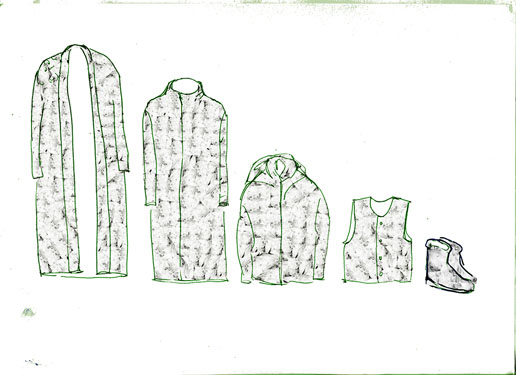
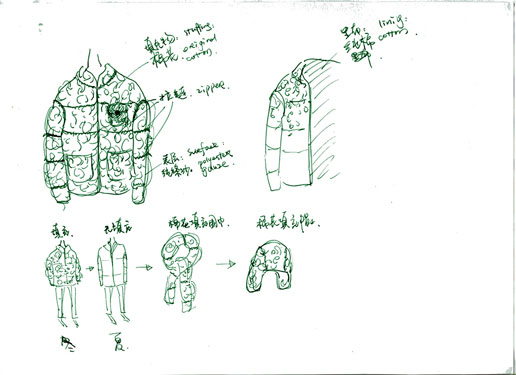
“涤纶”和“棉花”成为展开设计的材料。以棉花纤维为原料,填放在“涤”制物的包裹下,是“非聚合物”对“聚合物”的填塞和完成,是为 “初级城市”样貌。而在对于穿着功能的深化设计上,当棉花纤维被抽取和重填塞后,衣物和衣物间可完成季节和物件的至少两种转换。由这种方式可再继续扩展,完成一个成衣系列。
Polyester and cotton therefore became the materials I started my design with. Cotton fibres are filled in the polyester shapes, embodying simple elements filling up compounds, creating the landscape of an early city. On the function level, with cotton fiber installed and removed, the design will be ideal for two seasons, as well as the shift between clothes and accessories. The collection is developed and completed following this model.
可这样就可以解决了吗?如果只是提供一个优良的“解决方案”,这样就可以让这个社会有所改变吗?设计师之所以为设计师,而不是版师或者工程师,是不是还有他们需要完成的工作?任何人造物都有不实用的部分,是“剔除”还是“改动并说服使用者”,这是设计之启。 剔除者,不相信人;改动并说服者,太相信人。我乐于居中。
Is this the solution already? Is it possible that one "solution" will change the society for good once and for all? Do Designers, compared with pattern makers or engineers, have more to do? All man-made objects have parts that don't serve a purpose, and whether to get rid of these parts or improve them and persuade users to accept them is the job of a designer. Designers who choose to eliminate the non-functional parts don't believe in human beings; those try to improve the objects and persuade users have too much trust in human. I love to reside in between.
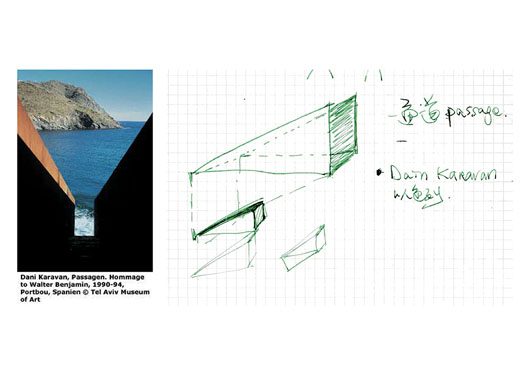
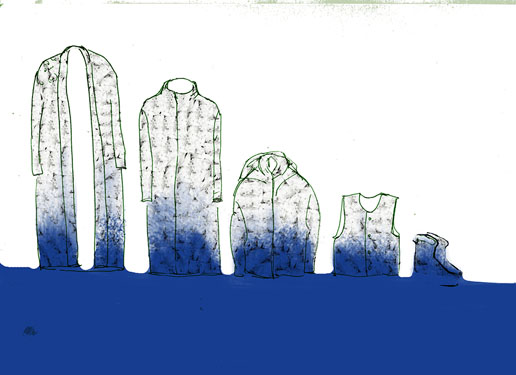
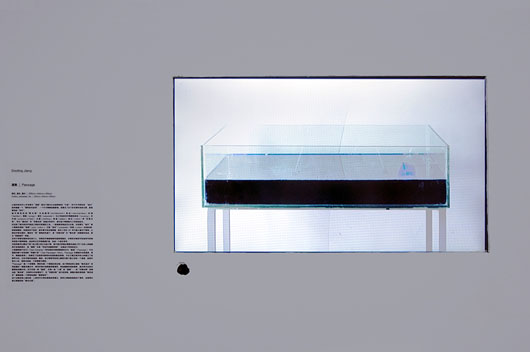
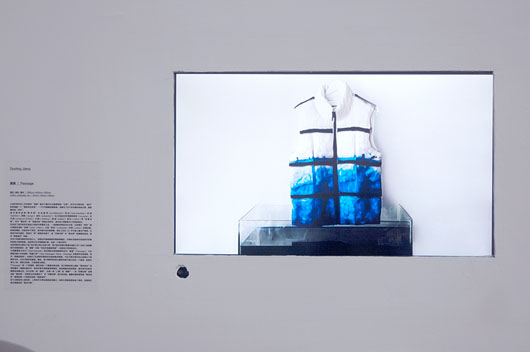
大型雕塑家卡拉万(Dani Karavan)把包港的本雅明墓碑命名为“通道”(Passages),不仅是因为那个未完成的“拱廊计划”(Das Passagen-Werk,Passage在德语中也有通道,章节,跨越的意思),也象征了这里是本雅明未完成的最后跨越。Karavan 通过海洋和山体建立了连接死与生、过去与现在的通道,当看到这个“Passage”的时候,我在想,如何以服装为媒介去建立这样的一个通道,连接衣物与人体、思维与转换、甚至是理想与现实。“Passage”,在我看来,是一个承载物,同时也是一个被通过的过程。 为此,我将尝试把之前的“棉花成衣”系列放置在一滩蓝色墨水中,棉花纤维本身具备的吸湿性,将会随着时间的推移,逐步将本色的衣服浸染成墨水色。我以为这不仅是一条“通道”,亦是一场“入侵”的“通路” —— 由“非聚合物”发展出的“聚合物”,在条件允许的情况下,对“非聚合物”进行反发展。被墨水部份浸染的“棉花成衣”展现的是一个即将完成的“超级城市”。
Sculptor Dani Karavan named Walter Benjamin's tomb at Pirt Bou "Passage", not only in commemoration of Benjamin's unfinished book "The Arcade Project" (The German title is "Das Passagen-Werk", in which the word Passage also means channel, chapter or leap-over), but also symbolizing the final chapter which Benjamin couldn’t leap-over. Karavan built a passage on the seas and mountains at Pirt Bou, a passage that connects life and death, past and present. Looking at its association with fashion, I began thinking how to construct such a passage where, fashion as medium connects clothes and body, mind and transformation, even utopia and reality. “Passage” is for me a medium as well as a channel,that allows others to pass. I began to experiment with the “cotton ready-to-wear” collection, immersing them in a small pool of blue ink. Due to great absorption capacity of cotton fibers, the organic color gradually became ink blue. This is to me more than a “passage”, it’s almost a pat hway for “invasion” – compounds developed from simple elements, and sometimes simple elements resist development. The cotton ready-to-wear soaked with ink is the replicate of a becoming “megacity”.
这个过程没有人能抗拒,人类当代文明也是因此而建立,如何让观者能直面这个现实,这是我真正想提供的“解决方案”。
There’s no such option as “cancel” in this process, just like how human civilization came into shape with exactly the same process. How to provide a standpoint for people to face the reality is the “solution” that I want to supply.
Text: Dooling Jiang
Translation: Lynn Zhang
post date: 2013/01/15